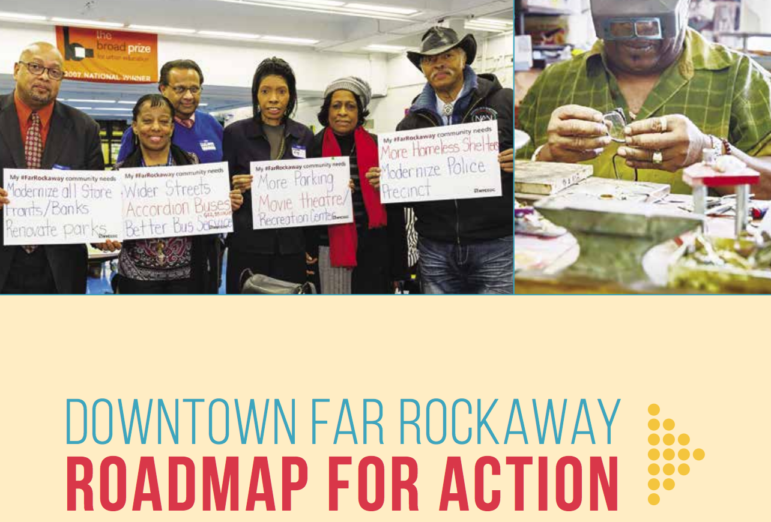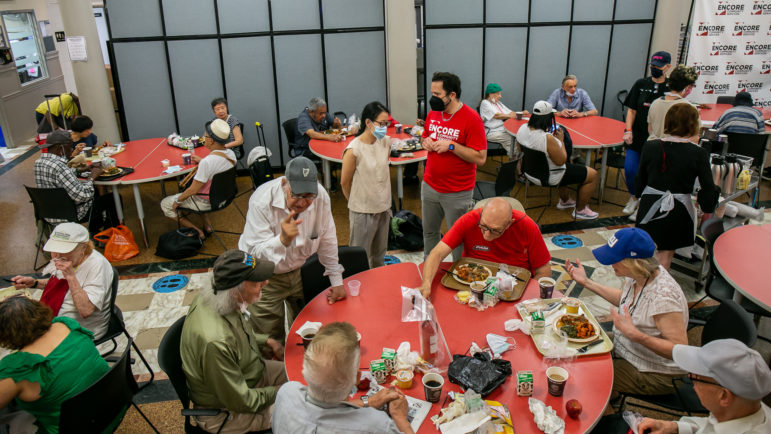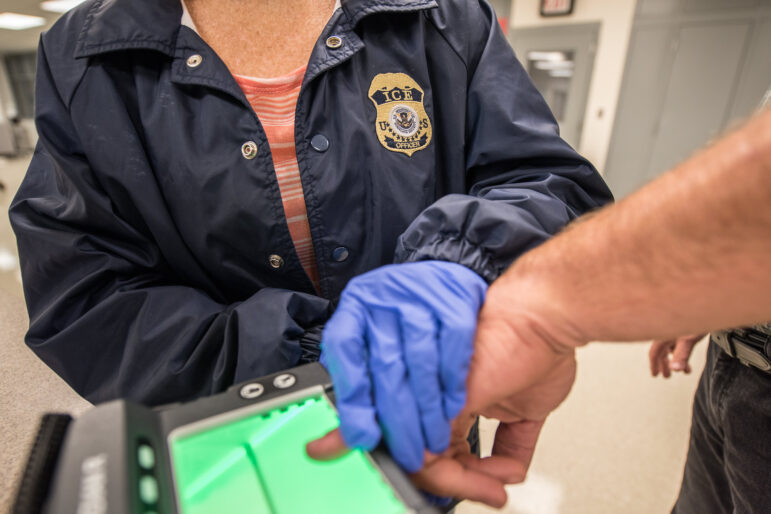
EDC
The cover of the Economic Development Corporation's Downtown Far Rockaway Roadmap for Action plan
The City Council hearing held Thursday on the proposed downtown Far Rockaway rezoning had a fairly buoyant feel. Even critics seemed a little less disapproving than usual, perhaps resigned that the rezoning is a fait accompli. But supporters generally agreed that, as much as they welcome the changes, the current plan still has many issues to be worked out, especially as it concerns open space, transportation, school seats, job access, and the threats of displacement. Many want to ensure the plan actually benefits the area’s low-income residents.
“My opinion on this application is that we want to see something done in Far Rockaway, we are certainly supportive of a rezoning in the area, but we have a lot more work to be done,” said Donovan Richards, the area’s local councilman and, conveniently, chair of the Subcommittee on Zoning and Franchises, expressing what became the general sentiment of the afternoon.
The plan for downtown Far Rockaway is the second neighborhood rezoning proposed by the de Blasio administration to move through the public review process known as the Uniform Land Use Review Procedure (ULURP) through which a zoning change becomes law. The first neighborhood rezoning, affecting East New York, passed the Council in April 2016. A third, for East Harlem, is a couple steps behind Far Rockaway in the ULURP process. About seven others are in various stages of study and planning.
Queens Community Board 14 and Borough President Melinda Katz both approved the Far Rockaway rezoning but with substantial conditions. The City Planning Commission also approved the proposal earlier this month. Compared to some other neighborhood rezoning proposals, it has faced less resistance, perhaps reflecting the desire of many residents for long-overdue city investments in the area, or the fact that in this case the city will have more control of what happens as a result of the rezoning.
The proposal includes the redevelopment of downtown’s long-abandoned shopping mall and some adjacent properties through the creation of an Urban Renewal Area. That means the city would use eminent domain or negotiations to take ownership of those properties, redesign the street grid, and work with private developers to build new housing, commercial and community facilities.
The proposal also includes a rezoning of that area, the nearby streets and two public sites in the area. Altogether the proposal is expected to lead to an increase of 3,123 units of housing, of which the city expects half will be rent-restricted, as well as a boost in retail space and room for community facilities. The administration has already committed at least $91 million in city investments as part of a larger plan for the area.
Over the next few weeks, it’s expected that Richards, who as the local councilman will have the final say on the plan, will be privately negotiating with the administration to reach a compromise on some of the plan’s outstanding issues. On Thursday Richards said he believed “there is no such thing as a perfect plan”—a warning that he would not be able to address everyone’s concerns—but that he would “strive to make sure that this is the best plan for our community as we move forward.”
At the Thursday hearing, EDC president James Patchett said the plan would “bring downtown Far Rockaway back to the thriving village center that it once was” and emphasized the community engagement efforts that lead to the plan, including the contributions of the Downtown Far Rockaway Working Group lead by Councilman Richards.
Leila Bozorg from the Department of Housing, Preservation and Development (HPD) elaborated on the agency’s efforts to ensure “people who stuck it out during tougher times” can “reap the benefits of positive change in the community.” She said half the housing created in the Urban Renewal Area would be affordable to a range of incomes “from extremely and very low to moderate and middle-income households” and enumerated other preservation strategies the agency is pursuing, such as conducting outreach to property owners to offer them financial benefits in exchange for preserving affordability.
Nick Molinari of the Department of Parks and Recreation acknowledged that the Environmental Impact Statement for the project found that the rezoning would result in a great deficit of open space in the study area. Molinari said his agency would continue to work with partners to find solutions to this problem.
Richards then took about an hour to question the agencies on the details of the plan. Expressing a need for housing affordable to families making the lowest incomes, he asked what percent of the affordable housing in the Urban Renewal Area and on public land would be available to families making less than $25,770 for a family of three.
He asked about the city’s efforts on affordability preservation and open space, if the new buildings would feel overbuilt or cast shadows, if there would be sufficient parking, and what investments would be made to improve transit, among other questions. He also expressed a need for more school seats, sufficient community facility space and support for entrepreneurship, and even debated with city staff whether the width of a particular intersection on Mott Street was too narrow for turning buses.
Agency staff said that the affordability levels on the public sites and in the Urban Renewal Area were not completely determined but would likely be dictated by two subsidy programs, the Extremely Low Income and Low Income Affordability
program (which requires that of the affordable units, either 30 percent of the units serve formerly homeless families, or that 10 percent serve formerly homeless families and 10 percent serve families making less than $25,770) and the Mix and Match program, which generally targets a slightly higher income range.
City staff described how the rezoning would ensure the tallest buildings were clustered at the center of the development with shorter structures along the periphery in an effort to respect neighborhood character. They emphasized that their plan provides more parking than is usually required for affordable housing developments. Beyond the new ferry line to the Rockaways, news of transit improvements is somewhat murky, dependent on the completion of the Department of Transportation’s Access to Opportunity study this fall as well as negotiations with the MTA.
Local Assemblywoman Stacey Pheffer Amato offered support for the plan while expressing many concerns, including inadequate parking, the potential for traffic congestion, the necessity of more school seats and transportation investments, and especially the necessity of ensuring local residents stood to benefit from the development, with opportunities to enter union jobs and training for service-sector jobs.
“It’s like taking the rotary phone that’s on the wall and we’re taking it to the iPhone 7,” Amato said. “We want the Iphone 7, but some of us are still only using the rotary … so you have to bring us all up to speed.”
Jonathan Gaska, district manager of Community Board 14, heralded Donovan as “the champion we’ve been waiting for” and praised EDC for a “truly collaborative process.” Yet he also reiterated the board’s conditions—lower heights and a significant scale-back of the proposed density (for instance, 1,100 apartments, not 1,700, in the Urban Renewal Area), the necessity of a new school, much more parking to serve the island’s car-dependent residents, and that a Department of Sanitation lot, instead of being given to a developer to construct affordable housing, should be used as a playground, among other concerns.
Economic development and business representatives spoke out in favor of the plan, with one Far Rockaway business owner explaining that “property owners will now have the incentive to build or repair their properties” to attract new businesses, while existing businesses will invest in their shops to attract the new customers. A resident expressed excitement for a potential commercial revitalization, telling the subcommittee, “I’m tired of having to leave the community to go out to do shopping elsewhere.” St. John’s hospital also submitted a testimony in support of the plan.
Multiple stakeholders called on the council to retain the Department of Sanitation lot and use it to meet community green space needs, including a potential community garden and urban farm. Others called for the use of nonprofit and minority developers and for investments in affordable commercial space, entrepreneurship, union apprenticeship programs.
“There is no point in building all these fabulous developments if we’re not offering opportunity to those who lived during the struggle,” said Jeffrey Williams-Maisonet, a young resident and intern to the Councilman, who described growing up in “a very challenging neighborhood with a lot of violence.”
A few representatives from the property services workers union 32BJ called for prevailing wages on all the development sites in the Urban Renewal Area and “a fair and transparent process to determine the developers for the Urban Renewal Area.”
Two residents of homeowner communities near to Far Rockaway acknowledged the need for improvements in downtown but implored the city to hear their concerns about parking, too much housing density, and insufficient public transportation, among other concerns. Phyllis Rudnick said she was concerned that too many of the new residents would be low-income.
Others, however, called on Richards to ensure enough of the new housing is affordable to existing residents.
“We were forced out of Brooklyn because of gentrification, because our rent was increase four times from when we originally moved there, and we don’t want to see that happen here,” said Khaleel Anderson of Community Board 14.
The subcommittee will likely take a final vote on the proposal on Monday August 21 at 9:30 am at 250 Broadway, the 16th floor Committee Room. That will be followed by a vote by the Land Use Committee, then a final vote by City Council.
In other business, on Thursday the subcommittee, followed by the Council’s Land Use Committee, unanimously approved the East Midtown rezoning with some revisions. The rezoning, crafted by the Department of City Planning, is a response to years of planning by a steering committee of stakeholders and is intended to spur the development of new office space in midtown by allowing developers to build higher in exchange for making public investments.









One thought on “Optimism, but Lingering Concerns, at Council’s Downtown Far Rockaway Rezoning Hearing”
Pingback: Optimism, but Lingering Concerns, at Council’s Downtown Far Rockaway Rezoning Hearing; Subway sleeper kissed MTA conductor then punched her face – Brooklyn Local News